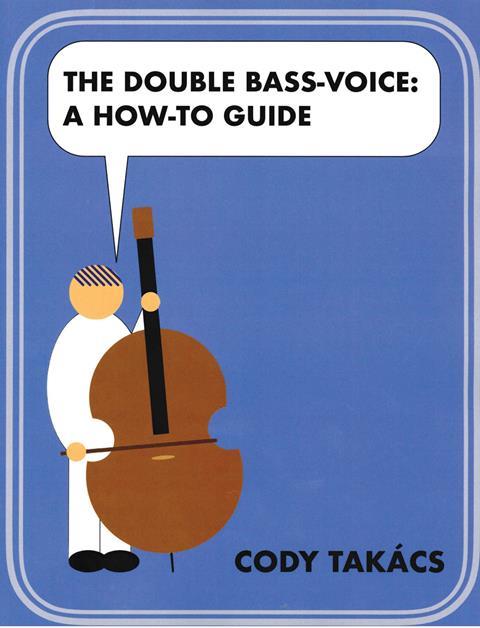
The Double Bass-Voice: A How-To Guide
Cody Takács
58PP ISBN 9781717231901
www.codytakacs.com $20
We are all told that we should be singing what we are playing while we are playing, but how many of us can sing another part, count the beats out loud, or talk about something quite different and continue to play with ease? It is the classic ‘pat your head and rub your tummy’ independence that musicians are well advised to develop but rarely do with any real expertise. Moreover, there is an expanding body of contemporary double bass repertoire that requires some sort of vocal technique, which we are surprisingly untrained to deliver. Now, however, we can celebrate that there is a practical guide to helping us achieve this.
The book is in four sections: Using the voice as a Practice Aid; Vocal Tools and Techniques; Exercises and Etudes; and Notation Examples. The first section shows how simple vocalisation exercises can help daily practice, and addresses the coordination issues of using the voice and simultaneously playing. This is followed by advice for non-vocally trained musicians on how to use the voice and some detailed help for preparing for some specific repertoire. The Exercises and Etudes use the voice for speaking, singing and phonetics, while the Notation section delves into the complexities of writing down the instructions to help both performers and composers.
The suggestions for aiding practice through the vocalisation of chords, dynamics, form and character make this book valuable to all bass players and students, whether they are about to tackle some contemporary repertoire requiring the voice or not. It becomes apparent that a misspent youth reading while playing so that parents thought practice was happening was possibly not so misspent after all!
The section on vocalisation addresses not only diction and voice production but also posture at the bass. The exercises following this start from a level that could easily be incorporated into lessons with relative beginners – singing a melody like ‘Twinkle, Twinkle’ while playing an open-string accompaniment only gets harder the more years we play without trying it.
I cannot recommend this book too highly. It is short and utterly to the point whether you intend to speak and sing while playing, or not. Congratulations, Mr Takács.
CATHY ELLIOTT











































No comments yet